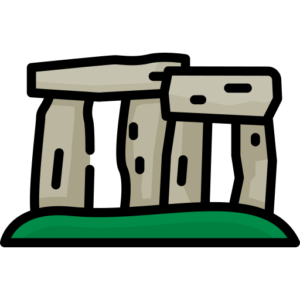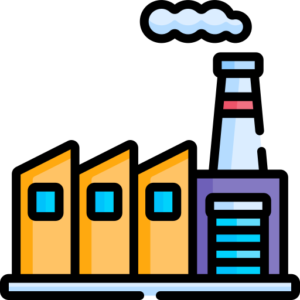Pyongyang, North Korea
Region: Pyongyang is located in Pyongyang
Geographic Coordinates: 39.019400, 125.738000
Temperature Range: -20.0°C to 35.0°C (-4°F to 95°F)
Climate: Cold winters, hot summers, and humid monsoon season.
Population: 2863000
Language: Korean
Pyongyang, The capital of North Korea, Has been shrouded in mystery for decades. It is one of the most isolated and secretive cities in the world, Making it difficult for outsiders to gain access to its inner workings. Despite this, Pyongyang has a rich history and culture that dates back thousands of years. One of the most striking features of Pyongyang is its architecture. The city was largely destroyed during the Korean War in the 1950s but was rebuilt with an emphasis on grandiose socialist architecture.
The skyline is dominated by towering concrete buildings adorned with socialist realist murals and propaganda slogans. One notable example is the Ryugyong Hotel, Which remains unfinished to this day. The city also boasts several important historical sites such as Juche Tower standing at over 150 meters tall serving as a symbol of North Korea’s ideology of self-reliance, And Kumsusan Palace of Sun housing embalmed bodies revered as god-like figures by many North Koreans. Despite its imposing appearance, Pyongyang can be surprisingly green and peaceful at times with several parks throughout where locals gather to relax or exercise.
Moranbong Park offers stunning views over both sides of Taedong River that flows through central Pyongyang. Pyongyang also has a thriving cultural scene showcasing local artists’ works inspired by their country’s revolutionary history or depicting scenes from everyday life under socialism through music performances, Dance shows, Theater productions and art exhibitions.
However, Visitors should keep in mind that much about daily life in Pyongyang remains tightly controlled by government authorities who monitor all activities closely – especially those involving foreigners – making it difficult for outsiders to get an accurate picture beyond what they see on official tours organized by state-run travel agencies. Pyongyang is a unique city where past and present collide fascinatingly while being tightly controlled by government authorities.
Although not an easy place for outsiders to visit due to restrictions imposed on them during their stay; those who do make the journey will undoubtedly come away with a deeper understanding of North Korea and its people.


Important Landmarks
- Juche Tower: A 170-meter tall tower located on the bank of the Taedong River.
- Kim Il-sung Square: The central square of Pyongyang named after North Korea’s founder and first leader.
- Mansudae Grand Monument: A bronze statue of Kim Il-sung and his son Kim Jong-il located on Mansu Hill.
- Kumsusan Palace of the Sun: A mausoleum where the embalmed bodies of Kim Il-sung and Kim Jong-il are kept.
- Ryugyong Hotel: A 105-story pyramid-shaped skyscraper that is currently under construction.
- Arch of Triumph: An archway built to commemorate North Korea’s resistance against Japan during World War II.
- Moranbong Park: A public park with beautiful scenery that offers views over Pyongyang city.
- Mangyongdae Native House: The birthplace and childhood home of President Kim Il Sung which has been converted into a museum showcasing his life story.
Note that these are just a few examples as there may be other landmarks or attractions in Pyongyang depending on one’s interests or preferences to visit while traveling there; however, it is important to note that tourism in North Korea is heavily regulated by the government, so it may not be possible for everyone to visit all these places without restrictions or supervision from official guides or authorities present at each site visited by tourists visiting this country for tourism purposes only (which is quite rare).

Primary Industries
- As a language model, I don’t have recent information about the current status of industries and businesses in Pyongyang, North Korea.
- However, based on available sources, some significant industries in North Korea are:
- Mining (coal, iron ore, limestone)
- Agriculture (rice cultivation, fishing)
- Manufacturing (textiles, machinery)
- Tourism
- Additionally, the government has control over most of the country’s economic activities through state-owned enterprises.
- The Koguryo Kingdom had its capital in Pyongyang from 37 BC to AD 668.
- The Samguk Sagi describes how Tan’gun founded Pyongyang in 1122 BC.
- During Japan’s occupation of Korea from 1910-1945, Pyongyang was developed as an industrial hub.
- The city was heavily bombed during the Korean War (1950-1953) but was rebuilt after the war ended.
- Kim Il-sung, who was born in Mangyongdae-guyok district of Pyongyang in 1912, is considered the founding leader of North Korea.
- He developed Juche ideology, a political philosophy that emphasizes self-reliance and independence from foreign influence.
- The Arirang Festival is an annual mass games event held at May Day Stadium in Pyongyang where thousands of performers showcase synchronized gymnastics, dance, and music performances.
- The Ryugyong Hotel is one of North Korea’s tallest buildings but remains unfinished due to economic struggles faced by the country.
- The Kaesong Industrial Complex located near Pyongyang operated as a joint venture between North and South Korea from 2004 to 2016 before being closed due to political tensions between both countries.
- Mansudae Art Studio produces many propaganda artworks including statues depicting Kim Il Sung & other leaders’ achievements and accomplishments.
- Kumsusan Palace of the Sun – a mausoleum where the bodies of North Korean leaders Kim Il-sung and Kim Jong-il are preserved.
- Juche Tower – a 170-meter tall tower that symbolizes North Korea’s ideology of self-reliance.
- Mansudae Grand Monument – two bronze statues of former leaders Kim Il-sung and Kim Jong-il located in the heart of Pyongyang.
- The Grand People’s Study House – a library and cultural center with over 30 million books and documents.
- Arch of Triumph – a massive archway modeled after the Arc de Triomphe in Paris to commemorate North Korea’s victory over Japan in World War II.
- Ryugyong Hotel – a massive unfinished hotel with 105 floors that has become an iconic landmark of Pyongyang’s skyline.
- Mangyongdae Revolutionary Museum – dedicated to the life and achievements of Kim Il-sung, who was born in Mangyongdae village outside Pyongyang.
- Moranbong Park – A beautiful park located on Moran Hill which is popular among locals for picnics, hiking, and enjoying scenic views.
- There are no professional sports teams in Pyongyang, North Korea.
- However, there are amateur sports teams and clubs that participate in local and national competitions.
- The most popular sports in North Korea include:
- Football (soccer)
- Basketball
- Volleyball
- Table tennis
- Martial arts
- The country has also produced several Olympic medalists in:
- Weightlifting
- Gymnastics
- Arirang Mass Games – A grand performance featuring thousands of performers showcasing gymnastics, dance and music.
- Kim Il Sung’s Birthday – Celebrated on April 15th every year with a grand parade and fireworks display.
- Victory Day – Celebrated on August 15th to commemorate the liberation of Korea from Japanese colonial rule.
- National Day – Celebrated on September 9th to mark the founding of North Korea.
- Pyongyang International Film Festival – A biennial event showcasing films from around the world.
- Mangyongdae Prize International Marathon – An annual marathon held in April that attracts runners from around the world.
- Naengmyeon (cold buckwheat noodles)
- Kimchi (fermented vegetables)
- Pansangi (assorted side dishes)
- Bibimbap (mixed rice bowl)
- Okryu-gwan Restaurant
- Chongryu Restaurant
- Koryo Hotel Restaurant
- Moranbong Restaurant
- Moranbong Park: A large park with walking paths, gardens, and waterfalls located in the center of Pyongyang.
- Taedonggang River Cruise: Visitors can take a boat ride along the Taedong River to see various landmarks and attractions in Pyongyang.
- Mangyongdae Funfair: An amusement park featuring roller coasters, bumper cars, and carousels.
- Rungra Island Sports Complex: A sports complex with facilities for soccer, basketball, volleyball, tennis and other sports.
- Ryugyong Health Complex: A modern health club that includes swimming pools and saunas.

Noteable History

Museums and Things To See
Visitors must be accompanied by government-approved tour guides at all times while visiting these sites in North Korea, including within Pyongyang city limits due to strict regulations on foreign visitors’ movements within the country.


Sports Teams

Cultural Events
Please note that some events may not be open for international tourists or visitors at all times due to political reasons.

Cuisine
Additionally, here are some well-known restaurants in Pyongyang:

Parks and Recreation
It’s important to note that North Korea has limited access for foreigners due to its highly controlled society. Before planning any trip there, it’s essential to check travel advisories as well as follow local laws during your stay there.






